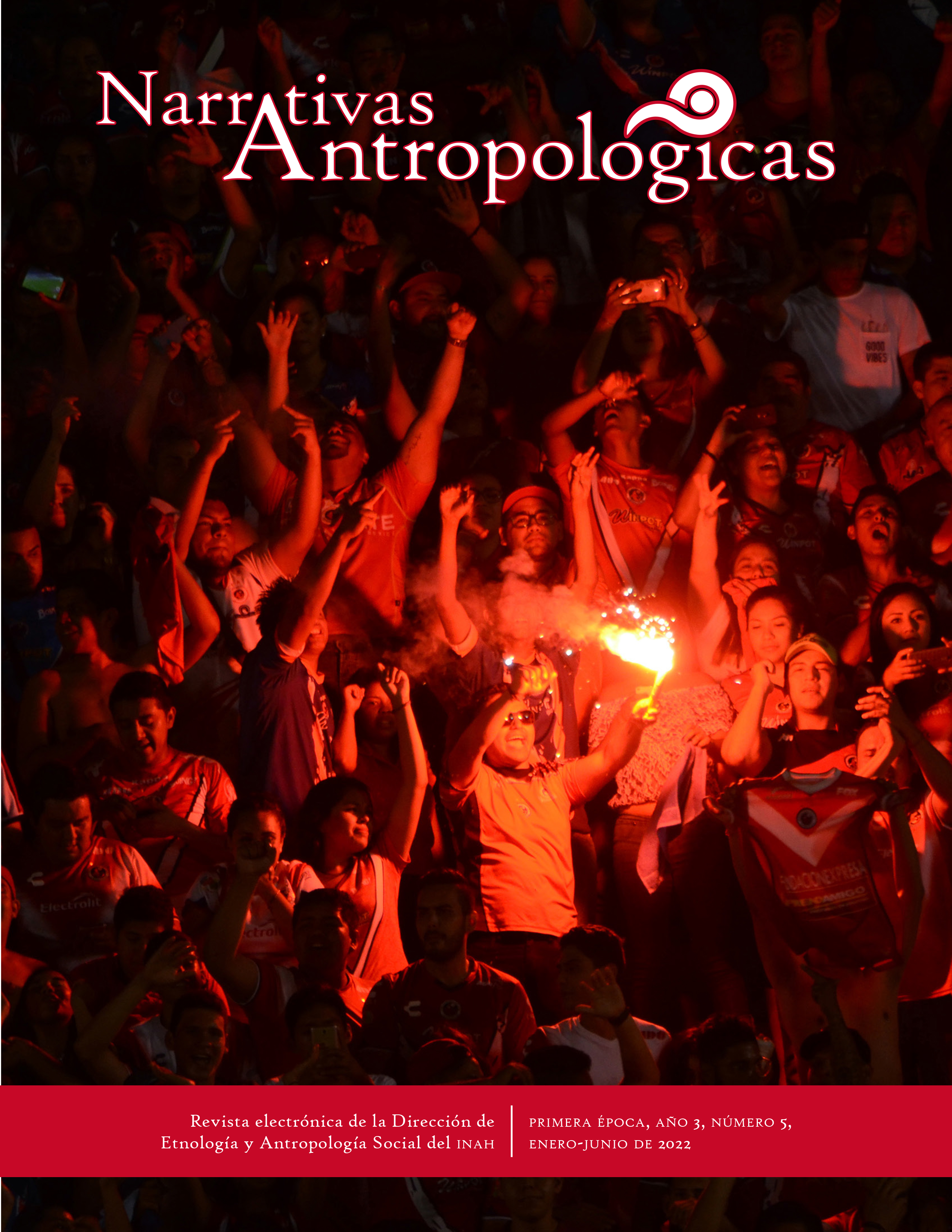Ya’ah ché wah, “ceiba tamal” and nahwah, “great tamal”: Women in the preparation of the ritual offerings among the Northern Lacandon
Published 2022-01-19
Keywords
- Lacandon, ritual offerings, gender, trees, ceiba.
How to Cite
Abstract
The article offers the description of two Lacandon ritual offerings: the nahwah, (‘great tamal’) and the ya’ah ché wah (‘ceiba tamal’), about which there are no ethnographic references. The text has a dual purpose: to provide the description of the preparation of a ritual tamale that was never recorded by other anthropologists, also offering the interpretation of its symbolic meanings. In addition, to recover the role of women in Lacandon rituals, for they have occupied a marginal position in ethnographic accounts. Through the analysis of ritual offerings, different topics will be addressed: symbols and taboos related to the preparation of divine foods, the Lacandon conception of trees, the exclusion and inclusion of women in ritual processes.
Downloads
References
- Chávez Guzmán, Mónica, Cuerpo, enfermedad y medicina en la cosmología maya del Yucatán colonial, Mérida (México: UNAM, 2013).
- Baer, Phillip, y Mary Baer, Lacandon Ethnographic Material, (Chicago: University of Chicago Library [Microfilm Collection of Manuscripts on Middle American Cultural Anthropology, 34], 1950).
- Balsanelli, Alice, “De tlacuache a hombre: ideas sobre la gestación y la noción de persona entre los mayas lacandones de Chiapas, México”, Boletín de Antropología, vol. 34, núm. 57 (Medellín: Universidad de Antioquia, 2019).
- Balsanelli, Alice, “La condición de humanidad entre los lacandones de Najá” (tesis de maestría, ENAH, 2014).
- Boremanse, Didier, Cuentos y mitología de los lacandones: contribución al estudio de la tradición oral maya (Guatemala: Academia de Geografía e Historia de Guatemala, 2006).
- Boremanse, Didier, Hach Winik: The Lacandon Maya of Chiapas, Southern Mexico (Nueva York: Institute of Mesoamerican Studies-The University at Albany, 1998).
- Boremanse, Didier, Ruins, Caves, Gods & Incense Burners: Northern Lacandon Maya Myths and Rituals (Salt Lake City: The University of Utah Press, 2020).
- Bruce, Robert D., et al., Los lacandones 2: cosmovisión maya (México: Instituto Nacional de Antropología e Historia, 1971).
- Bruce, Robert D., Lacandon Dream Symbolism 2 (México: Ediciones Euroamericanas Klaus Thiele, 1979).
- Bruce, Robert D., Textos y dibujos lacandones de Najá, edición trilingüe (México: INAH, 1976).
- Davis, Virginia Dale, Ritual of the Northern Lacandon Maya (Tesis doctoral, New Orleans: Tulane University, 1978), 60-61.
- Gabriel, Marianne, “Lo profano y lo sagrado, elementos distintivos entre la alimentación cotidiana y la ritual”, en Los Investigadores de la Cultura Maya, ed. por María del Rosario Domínguez Carrasco et al. (Campeche: Universidad Autónoma de Campeche, 2018), 273-292.
- George Frazer, James, La rama dorada. Magia y religión (México: FCE, 1944 [1890]), 250-251.
- Ková?, Milan y Tatiana Podolinská, “Maya Female Taboo: Menstruation and Pregnancy in Lacandon Daily Life”, Weaving Histories: Women in Mesoamerican Culture, Society and Politics, Contributions in New World Archaeology, vol. 11, ed. De Monika Banach et al., 2017, Special Issue, Proceedings of the 5th Cracow Maya Conference “Weaving Histories: Women in Mesoamerican Culture, Society and Politics”, 143-148.
- Marion Singer, Marie-Odile, El poder de las hijas de la luna (México: Plaza y Valdés, 1999).
- Marion Singer, Marie-Odile, Los hombres de la selva: un estudio de tecnología cultural en medio selvático (México: INAH, 1991).
- McGee, Jon, “Sacrifice and Cannibalism: An Analysis of Myth and Ritual Among the Lacandon Maya of Chiapas, Mexico” (tesis doctoral, Rice University, 1983).
- McGee, Jon, Life, Ritual, and Religion Among the Lacandon Maya (Belmont: Wadsworth Publishing Company, 1999).
- Morales Damián, Manuel Alberto, “Uninicil te uninicil tun. La naturaleza humana en el pensamiento maya”, Estudios de Cultura Maya, vol. XXIX, 2007, 83-102.
- Nájera Coronado, Martha Ilia, El umbral hacia la vida. El nacimiento entre los mayas contemporáneos (México: UNAM-IIF, 2000).
- Ne?asová, Lucie, “Las mujeres lacandonas: cambios recientes”, LiminaR. Estudios sociales y humanísticos, año 8, vol. VIII, no. 1 (San Cristóbal de Las Casas, junio de 2010), 80-103.
- Phillip, Baer, y William R. Merrifield, Los lacandones de México: dos estudios (México: Instituto Nacional Indigenista, Secretaría de Educación Pública, 1972).
- Sidney Thompson, John Eric, Historia y Religión de los Mayas (México: Siglo XXI, 1982), 217.
- Soustelle, Georgette, “Observations sur la religion des Lacandons du Mexique méridional”, Journal de la Société des Américanistes, t. 48, 1959, 141-196.
- Soustelle, Jacques, México, tierra india (México: SEP, 1971), 206.
- Tozzer, Alfred M., A Comparative Study of the Mayas and the Lacandones (Nueva York: Mc. Millan Co, 1907).
- Villa Rojas, Alfonso, Estudios etnológicos: Los Mayas (México: UNAM, 1985).
- Villa Rojas, Alfonso, Los elegidos de Dios. Etnografía de los mayas de Quintana Roo (México: INI, 1992).

